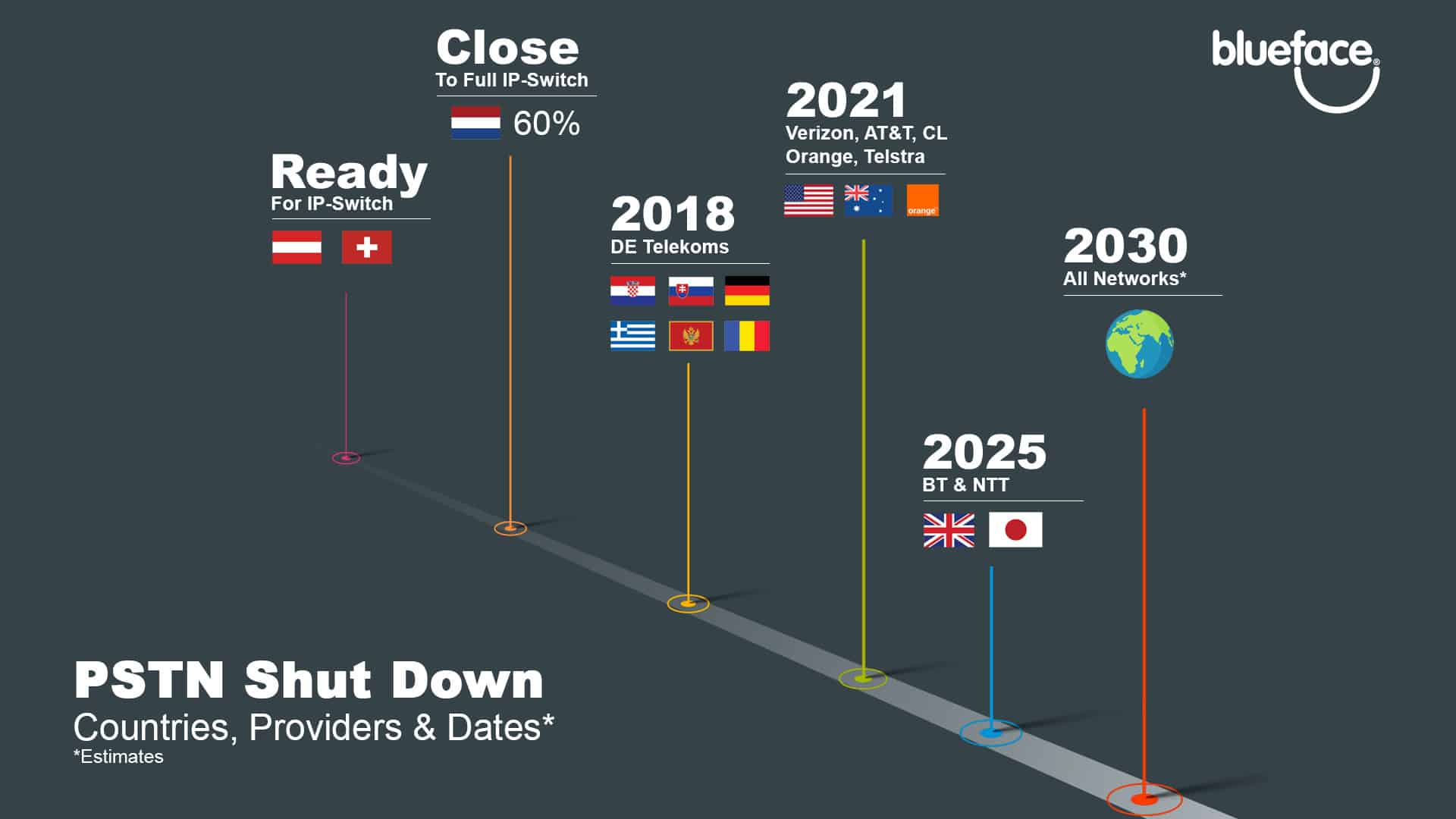Feargal Brady (left), Co-founder and Director, Blueface
Feargal Brady, Co-founder and Director of Blueface, the unified Communications-as-a-Service provider, speaks of the decline of the traditional phone networks, how the systems work, the reasons for the upgrade in technologies and what lies ahead in telecommunications.
PARTNER CONTENT IN ASSOCIATION WITH BLUEFACE
Goodbye, phone networks
BT has announced that by January 1, 2025 they will have migrated their existing UK customers from line-based phone networks (PSTN/ISDN) to IP-based phone networks.
While Ireland has yet to announce a date, the industry-led global ‘PSTN Shut Down’ seeks to end line-based telephony in favour of future-proof, IP communications technology.
BT will join Verizon, AT&T, Telstra, DE Telekoms and a host of global telecommunications leaders in the move. But what does the IP migration mean for your business?
Making calls over the Internet via Voice over Internet Protocol (VoIP) has grown significantly in popularity as an alternative to standard voice calls. The impending migration will cement VoIP as the voice standard with no available alternative.

How does telephony work now?
As it is, the public switch telephone network (PSTN) sends voice signals over circuit-switched copper cables, not dissimilar from the old two-cups-and-copper-cable walkie-talkies.
Public switch networks have evolved to carry ADSL, ISDN and Fibre-to-the-Cabinet (FTTC), which was sufficient for home networks for quite some time.
Not only did migration from analogue (PSTN) to digital (ISDN) enhance call quality, the enhanced reliability paved the way for features like call waiting, forwarding and, importantly, conferencing.
Modern consumers demand a full digital content suite including video-on-demand, IM and more; digital networks no longer have the bandwidth to accommodate the ever-expanding set of features organisations require.
As these lines carry residential broadband and there are currently no viable alternatives for certain vital services – such as security systems – the ‘shutdown’ refers primarily to voice services carried over PSTN.
Why now?
There are many reasons but the upgrade falls under one umbrella – progress.
From a technology perspective, the IP migration has been on the horizon since the invention of VocalTec’s ‘Internet Phone’ in 1995 – PSTN is very old after all.
Deregulation, infrastructural improvements and service consolidation have sparked a revolution in the telecommunications industry.
In four short years, broadband speeds have went from below 10Mbps in 2014 to 50Mbps in 2018 (Blueface BCT 2018 Research).
VoIP’s now-known ubiquity and increasing popularity has dented PSTN/ISDN subscriptions, making the legacy network more expensive to maintain.
What’s next?
The PSTN lines will cease voice communication and continue to deliver internet (and other vital services) for years, but the way people use voice to communicate is rapidly changing.
Asynchronous voice popularity has skyrocketed as VoIP messaging client WhatsApp report over 200 million messages are sent per day. Fixed, line-based call volume has declined significantly, while VoIP calling – particularly for businesses – is climbing.
Tools like automatic speech recognition (ASR) can now search, dictate, command, contextualise information and more. When integrated with AI, automated voice can control last-mile logistics, i.e. automated car making automated delivery with the help of automated calling.
Customer relationship management (CRM) technology combined with x VoIP allows companies like Domino’s Pizza to have customer visibility, as integrated account details display with incoming calls. Real-time order automation, menu favourites and more display with caller ID.
After years of stagnation, the telecoms industry will be on the forefront of technology. In the future, telephony may be line-free but we’ll be more connected than ever.
Blueface is a leading unified Communications-as-a-Service provider to businesses, enterprises and carriers. Founded in 2004, Blueface’s proprietary cloud voice UC platform services business customers of all sizes, ranging from SMEs through to large multinational enterprises.






